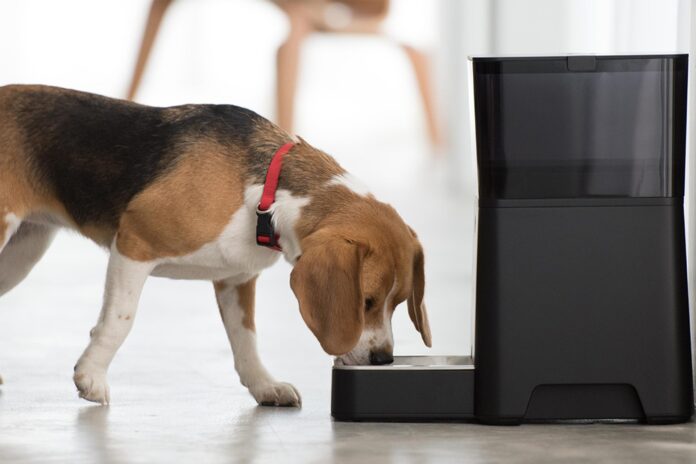With predictions of billions of new devices with wireless connectivity over the coming years, the “Internet of Things” is expected to have a major influence on multiple verticals and consumers’ everyday lives. And it turns out that already, everything from dog dishes to stuffed animals to vacuums and home appliances are getting connected.
Cisco’s Mobile Visual Networking Index for 2016 estimates that machine-to-machine connections will grow from 604 million last year to 3.1 billion by 2020, reflecting five-fold growth.
“M2M connections – such as home and office security and automation, smart metering and utilities, maintenance, building automation, automotive, health care and consumer electronics, and more – are being used across a broad spectrum of industries, as well as in the consumer segment,” Cisco concluded. In the wearables market specifically, Cisco projects there will be 601 million devices globally by 2020 – and most of those devices will be connected by a noncellular technology such as Bluetooth or Wi-Fi, with only 7% expected to be cellular-equipped.
While Linksys’ H2O router claimed to provide Wi-Fi coverage up to 10,000 feet underwater was an April Fool’s joke, there are more than enough real envelope-pushing Wi-Fi gadgets on the market or in development to prove that for Wi-Fi, the IoT is already here. Some of these include:
-Amazon.com’s Wi-Fi-enabled Dash buttons currently serve more than 100 brands with one-touch reordering in the home, enabling consumers to push a button and automatically place an order with Amazon. The buttons are available at $5 a pop, with the cost recouped in a $5 credit on the first product order. Perhaps more interestingly, Amazon is now partnering with other brands to incorporate Dash ordering capabilities in its Dash Replenishment Program and has released an API to encourage such development. Samsung, General Electric and others have signed up to build hardware that can re-order products without any intervention. A Whirlpool Smart Dishwasher, for example, can calculate how much product it has used compared to what’s available in a typical product size and re-order via Dash when the supply is running low.
-San Diego, California-based start-up BIGaVu connects teddy bears via Wi-Fi to provide music and voice messages from parents, and reacts to online games to provide entertainment for children who are in the hospital. The company recently unveiled prototypes of its bears and has a therapies-on-demand hardware and software platform.
-Jenn-Air added the brand’s first Wi-Fi enabled refrigerator to its lineup, which can be controlled via an Apple iOS or Google Android application for monitoring or directing tasks such as making extra ice. It’s set to be available later this year.
-The June computerized counter-top oven sends updates on cooking process to a smartphone app via Wi-Fi and can provide live video from inside the appliance, as well as a push notification when the dish is done. It also gets software updates via Wi-Fi. June recently raised $22.5 million in Series A funding and plans to start shipping ovens for the 2016 holiday season.
-In addition to its Bluetooth-enabled wearables, Fitbit has a Wi-Fi enabled scale that integrates with its Fitbit app. The fitness wearables market is a popular one for the integration of both Bluetooth and Wi-Fi; a new fitness tracking solution recently touted by Naked Labs includes a scanning mirror and a scale that doubles as a turntable so users are presented with a 360-degree view of their bodies and “heat maps” of changing areas to visually track their fitness progress. That offering is expected to be available in March 2017.
-The Petnet Wi-Fi-enabled SmartFeeder for pets has an app (for iOS only) designed to allow an owner to schedule automatic feedings while they are away. The app has a re-ordering option supported by Amazon’s Dash Replenishment Service and also recently added integration with Google’s Nest Cam.
–Foobot is an indoor air quality monitoring device with Wi-Fi connectivity designed to measure volatile organic compounds and particulate in the home, along with carbon monoxide, carbon dioxide, temperature and humidity.
-IRobot introduced embedded Wi-Fi connectivity to its Roomba vacuuming robot product line last year, with the Roomba 980 model that can be remotely controlled and scheduled via an Android or iOS app. Previously, workarounds were available for customers who wanted to control their Roombas via wireless, but the newest addition builds in Wi-Fi capabilities.
Looking for more perspective on where Wi-Fi is headed? Join RCR Wireless News April 28 for a special report and webinar on The Future of Wi-Fi. Register here.

